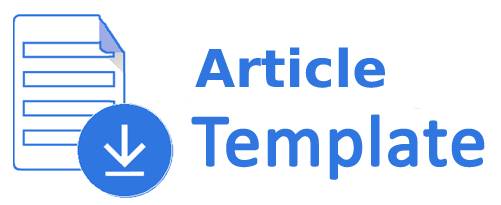Impact of the Legend Shiyali Ramamrita Ranganathan's Cited Research Articles through Google Scholar
DOI:
https://doi.org/10.17821/srels/2016/v53i1/86761Keywords:
Citation Analysis, Google Scholar, LIS, S. R. Ranganathan, Scholarometer.Abstract
This paper quantifies and analyzes the impact of research publications of Shiyali Ramamrita Ranganathan. The data for the study obtained using a web browser plug-in called Scholarometer through the Google Scholar, a search engine for scholarly communications. The study found 60 unique documents of S. R. Ranganathan. The paper analyzes the citations received by those research works through documents cited S. R. Ranganathan's work, citation count by document type, authorship pattern and discipline wise distribution of publications. This article also examines citation database using various research impact factors such as h-index, hm-index, hf-index and g-index. In addition, link analysis performed to provide interactive visualization of S. R. Ranganathan network displaying number of citation per author.Downloads
Downloads
Published
How to Cite
Issue
Section
License
All the articles published in Journal of Information and Knowledge are held by the Publisher. Sarada Ranganathan Endowment for Library Science (SRELS), as a publisher requires its authors to transfer the copyright prior to publication. This will permit SRELS to reproduce, publish, distribute and archive the article in print and electronic form and also to defend against any improper use of the article.
Accepted 2016-01-27
Published 2016-02-01
References
Citation Index Retrieved from http://zatoka.icm.edu.pl/sci/wos_man/citindhp.html
Retrieved from http://publications.drdo.gov.in/gsdl/collect/dbit/index/assoc/HASH5351.dir/dbit1205003.pdf
Broughton, V. (2006). Essential Classification. London, Facet Publishing. ISBN 978-1-85604-514-8
Indian Statistical Institute Library and Sarada Ranganathan Endowment for Library Science. S. R. Ranganathan – A Short Biography. Indian Statistical Institute.
Garfield, E. (1984a). A Tribute to S. R. Ranganathan, the father of Indian Library Science. Part 1. Life and Works. Current Contents, 7: 37–44.
Ranganathan, S.R. (1892–1972). The Hutchinson Unabridged Encyclopedia with Atlas and Weather Guide. Abington: Helicon, 2009. Credo Reference.
Mazzocchi, F. (2013). Ranganathan’s Universe of Knowledge and Categorical Thinking. SRELS Journal of Information Management, 50(6): 763–778. Retrieved from http://www.i-scholar.in/index.php/sjim/article/view/43825
Takeuchi, S. (2010). Dr. S. R. Ranganathan: A Commentary on S. R. Ranganathan’s Five Laws of Library Science. Information Studies, 16(3): 149–154.
Neelameghan, A. (2007). Dr. S. R. Ranganathan on ‘Documentation’ and DRTC. Information Studies, 13(2): 65–71.
Google Scholar about Retrieved from http://scholar.google.co.in/intl/en/scholar/ about.html
Google Scholar Citations Help Retrieved from http://scholar. google.com/intl/en/scholar/ citations.html
Meho, L.I. and Yang, K. (2007). Impact of Data Sources on Citation Counts and Rankings of LIS Faculty: Web of Science vs. Scopus and Google Scholar. Journal of the American Society for Information Science and Technology, 58(13): 2105–2125.
Meho, L.I. and Yang, K (2006). A New Era in Citation and Bibliometric Analyses: Web of Science, Scopus, and Google Scholar. (reprint of paper published (2007) as ‘Impact of data sources on citation counts and rankings of LIS faculty: Web of Science versus Scopus and Google Scholar’. Journal of the American Society for Information Science and Technology, 58(13): 2105–2125 DOI: https://doi.org/10.1002/asi.20677
Meyer, B.; Choppy, C.; Staunstrup, J. and Van Leeuwen, J. (2009). Research Evaluation for Computer Science. Communications of the ACM, 52(4): 31–34. DOI: https://doi.org/10.1145/1498765.1498780
Jacso, P. (2006). Dubious hit counts and cuckoo’s eggs. Online Information Review, 30(2): 188–193. DOI: https://doi.org/10.1108/14684520610659201
Sanderson, M. (2008). Revisiting h measured on UK LIS and IR academics. Journal of the American Society for Information Science and Technology, 59(7): 1184–1190. DOI: https://doi.org/10.1002/asi.20771
Google Scholar Citations Help Retrieved from http://scholar. google.com/intl/en/ scholar/citations.html
Stegmann, J. and Kretschmer, H. (2013). Ranganathan Today: A Citation Study. SRELS Journal of Information Management, 50(5): 473–478. Retrieved from http://www.i-scholar.in/index.php/sjim/article/view/43746
Raghavan, K. and Neelameghan, A. (2013). Ranganathan’s Contributions to Knowledge Organization and Presentation. SRELS Journal of Information Management, 50(6): 855-862. Retrieved from http://www.i-scholar.in/index.php/sjim/article/view/43835
Adhikary, M. and Nandi, A. (2004). Ranganathan’s Promulgation of Verbal Plane: a Linguistic Approach. SRELS Journal of Information Management, 41(3): 275–282. Retrieved from http://www.i-scholar.in/index.php/sjim/article/view/44490
Palmer, B. (1969). Ranganathan, The Man and His Works: View through a Bibliography (Biography series 1). SRELS Journal of Information Management, 6(3): 273–288. Retrieved from http://www.i-scholar.in/index.php/sjim/article/view/50186
Smiraglia, R. (2013). Prolegomena to a New Order: A Domain-Analytical Review of the Influence of S. R. Ranganathan on Knowledge Organization. SRELS Journal of Information Management, 50(6): 709–719. Retrieved from http://www.i-scholar.in/index.php/sjim/article/view/43812
Klerks, P. (2001). The network paradigm applied to criminal organizations: Theoretical nitpicking or are levant doctrine for investigators? Recent developments in the Netherlands. Connections, 24: 53–65. CiteSeerX:10.1.1.129.4720
Harper and Harris. (1975). The Analysis of Criminal Intelligence, Human Factors and Ergonomics Society Annual Meeting Proceedings, 19(2): 232–238. DOI: https://doi.org/10.1177/154193127501900216
Moty Ben-Dov presentation of Improving Knowledge Discovery By Combining Text-Mining (TDM) and Link-Analysis Techniques Retrieved from http://www-users. cs.umn.edu/~aleks/ sdm04w/ ben-dov.pdf
Hirsch, J.E. (2005). An index to quantify an individual’s scientific research output. PNAS, 102(46): 16569–16572. Retrieved from https://www.ncbi.nlm.nih.gov/pmc/articles/ PMC1283832. DOI: https://doi.org/10.1073/pnas.0507655102
McDonald, K. (2005). Physicist Proposes New Way to Rank Scientific Output. Retrieved from http://www.physorg.com/news7971.html.
Peterson, I. (2005). Rating Researchers. Retrieved from http://www.sciencenews.org/ view/generic/id/6824/title/Math_Trek__Rating_Researchers
Egghe, L. (2006). Theory and Practise of the g-index. Scientometrics, 69(1): 131–152. DOI: https://doi.org/10.1007/s11192-006-0144-7
Schreiber, M. (2008). To share the fame in a fair way, hm modifies h for multi-authored manuscripts. New Journal of Physics, 10: 040201. DOI: https://doi.org/10.1088/1367-2630/10/4/040201
Schreiber, M. (2008). An empirical investigation of the g-index for 26 physicists in comparison with the h-index, the A-index, and the R-index. Journal of the American Society for Information Science and Technology, 59: 1513–1522. DOI: https://doi.org/10.1002/asi.20856
Radicchi, F.; Fortunato, S. and Castellano, C. (2008). Universality of citation distribu-tions: Toward an objective measure of scientific impact. Proceedings of the National Academy of Sciences, 105(45): 17268. DOI: https://doi.org/10.1073/pnas.0806977105
Satija, M.P. (2003). Public library planning and legislation in India contribution of S.R. Ranganathan. Herald of Library Science, 42 (1/2): 22–36.
Roe, G. (2010). Challenging the Control of Knowledge in Colonial India: Political Ideas in the Work of S. R. Ranganathan. Library and Information History, 26(1): 18–32. DOI: https://doi.org/10.1179/175834909X12593371068342

 K. Kumar
K. Kumar








